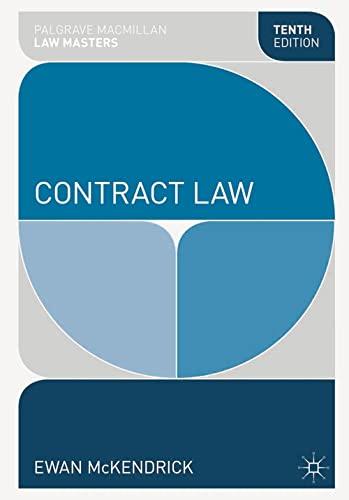Question
I NEED HELP WITH THIS QUESTIONS PLEASE. 1-Have the documents in Part VII causedyou to think differently aboutyour ideas of justice? Describe the change. Part
I NEED HELP WITH THIS QUESTIONS PLEASE.
1-Have the documents in Part VII causedyou to think differently aboutyour ideas of justice? Describe the change.
Part VII Reading Summaries
-The U.S. Constitution, Article I, Section 2 "The "'Three-Fifths Compromise'"
The Three-Fifths Compromise was a compromise between the South, which held that enslaved people should be counted in determining representation in the House but that they should not be counted in determining a state's share of the direct tax burden, and the North, which held the exact opposite viewpoint. A compromise was reached, whereby enslaved people were to be each counted as three-fifths of a person in apportionment of representation and indirect taxes among the states.
-Elizabeth Cady Stanton "Declaration of Sentiments and Resolutions, Seneca Falls Convention, 1848"
The Declaration of Sentiments, adopted in July 1848 at Seneca Falls, New York, at the first women's rights convention, is the most famous document in the history of feminism. Like its model, the Declaration of Independence, it contains a bill of particulars. After the passage of the resolutions (all unanimously passed, except the one calling for women's suffrage, which did pass nevertheless), this document inaugurated the women's suffrage movement in the United States.
-W. E. B. Du Bois "The Black Codes"
This seminal essay by Du Bois, a preeminent African American historian, sociologist, human rights activist, and one of the founders of the NAACP, outlines the legal codes that were enacted in the South following the Thirteenth Amendment, which freed enslaved people. These Black Codes were laws intended to blunt the power of the amendment, in order to "make Negroes slaves in everything but name."
-The Chinese Exclusion Act, 1882
The Chinese Exclusion Act suspended all migration of Chinese skilled and unskilled workers, as well as Chinese people employed in mining, to the United States. This excerpt from the act details the restrictions of the act and the consequences for violating, or participating in violating, the guidelines.
-U.S. v. Bhagat Singh Thind, 1923
In this case, Thind, an Indian immigrant, argued that he was racially Caucasian and thus eligible for citizenship. The ruling stated that it is the common understanding of "white persons," and not a scientific racial classification of Caucasian that determines eligibility for citizenship. As a matter of familiar observation, Thind appeared to be racially different; as such, his appeal was rejected.
-Brownv.Board of Education of Topeka, 1954
This case made segregation in public schools illegal, finding that "such segregation is a denial of the equal protection of the laws."
-Roev.Wade, 1973
This law legalized a woman's right to terminate her pregnancy by abortion. The law was based on the right to privacy grounded in the Ninth and Fourteenth amendments to the Constitution.
-The Equal Rights Amendment (Defeated)
The Equal Rights Amendment passed Congress in 1972, but it was not ratified by the requisite number of states to become part of the Constitution.
-Obergefellv.Hodges, 2015
This 2015 Supreme Court ruling legalized same-sex marriage in the United States. The decision states that the right to marry is guaranteed to same-sex couples through the Fourteenth Amendment's Due Process Clause and its Equal Protection Clause.
Step by Step Solution
There are 3 Steps involved in it
Step: 1

Get Instant Access to Expert-Tailored Solutions
See step-by-step solutions with expert insights and AI powered tools for academic success
Step: 2

Step: 3

Ace Your Homework with AI
Get the answers you need in no time with our AI-driven, step-by-step assistance
Get Started


